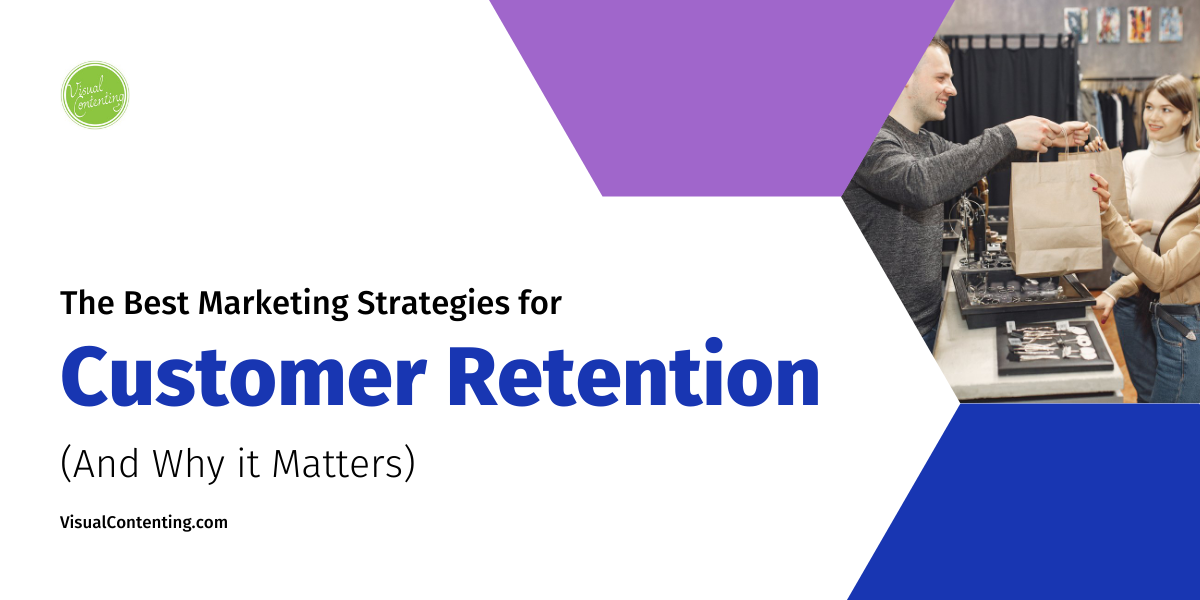The existing customer base is a potent tool for any business owner when it comes to marketing. Aside from their built-in devotion to the brand, they also bring powerful word-of-mouth potential. Technology continues to make connectivity (and sharing thoughts) easier by the day. As that trend continues, business owners must adapt and stay connected with their customers.
The best way to ensure a business stays on top is to keep its customers engaged. To do that, however, a business must understand its consumer base, and keep their current customers happy at the same time. With these strategies, business owners can deploy tested and impactful marketing.
Current Customers Come First
Why are your existing customers so important? The answer is simple:
You’ve already done all the work in securing their business.
It costs five times less to keep your current customers happy compared to finding new ones. As well, your existing customers are up to 70% more likely to buy something from you. Therefore, focus on the customer base that you’ve already cultivated. Continuously enhancing that connection will ensure long-term success.
Come up with strategies for your business that consider your customers first. If you’re a retailer, for example, rotate your inventory for variety. Focus on customer-favorite seasons. Match offerings based on what the customers are asking for. This option can be further refined by sending out regular surveys. Include questions such as:
- Are the items seasonally appropriate?
- What other items would you like to see?
- What is your favorite shopping season, and why?
- Do seasonal deals compel sales?
A strong connection with your customers will deliver strong, personalized answers. With a savvy social media presence, this can all be done through the web, as well. Use Facebook posts and Instagram stories to connect and chat with your base. Conduct polls and measure advertising metrics to gauge interest and engagement.
Recommended: 4 Worthwhile Online Tools to Nurture Face-to-Face Interactions with Your Customers
Businesses should also get in the habit of routine customer outreach. In other words, talk with them. Most importantly, this builds a genuine connection between customer and brand. Also, by doing so, the business will better understand the intrinsic values behind their customers.
For example, eCommerce stores should ask their customers about their common shipping concerns. They should also adapt their shipping elements to meet the customers’ demands.
Are shipping times a frequent problem? Do you routinely ship large items that carry extra fees? These are everyday concerns for an online retailer. And by understanding these questions, a business can provide FedEx for next-day shipping, or UPS for heavy items.
Focus on your existing customers. Meet their needs and provide a business experience that makes them want to talk about you. This powerful organic marketing will grow your business for you.
Stay Relevant as Times Change
These days, businesses can’t afford to stagnate. The pandemic has shifted the culture of consumers. Now, customer service is even more important than ever. The availability of emerging options makes it easier for customers to shop around, and technology allows them to find all the information they need, right at their fingertips.
To stay ahead of the competition, businesses must keep up with change. More often than not, this will mean researching the latest business technology and trends. One of the quickest growing trends is the surge of mobile shopping. In fact, the number of mobile shoppers doubled from 2018 to early 2020, mostly led by the pandemic.
Mobile and eCommerce shopping options are powerful tools in satisfying your existing customers. From brick-and-mortar retailers to dropshippers, any business must have a fluid eCommerce offering. Otherwise, they’re missing out on over 2 billion worldwide online purchasers.
Focus on the customer experience. Use tech such as AI chatbots for enhanced, 24/7 customer service. Plus, utilize plugins to display relevant ads and item reviews, thus further guiding your customers toward a sale. Other tactics include:
- Using blog posts and articles to bolster your products
- Using business automation tools to automate email and social media marketing
- Creating video project tutorials across your brand’s pages
Recommended: How to Use Chatbots to Drive Sales and Increase the Engagement
When it comes to tech, always keep the human element in mind. A business that connects with its customers will ensure loyalty and continued organic marketing through reviews, trending topics, and other positive word-of-mouth discussions.
Businesses can also consider loyalty programs that offer financing options. After the pandemic, customers have flocked to businesses that feature alternative payment options. This is especially helpful for customers trying to build credit, even if the financing doesn’t report to the bureaus.
By allowing customers to spread out their payments, your business opens up to even more customers. Indeed, studies have shown that financing options prompt customers to spend up to 15% more on an order. What’s not to love?
Business marketing doesn’t have to involve creative boardrooms and stressful, sleepless nights. Simply take a look at your current customer base. Reach out and ask them what they want. Use surveys, social media, and behind-the-scenes metrics to study their behaviors. Customers want a business that knows what they want. Fortunately, their actions generate all the data a business could want.
Once you’ve committed to continuous engagement, turn to tech to stay on top. AI and the internet are leading business changes, especially across retail channels. Study the tech as it emerges. Successful businesses will be experts with customer experience tools and marketing automation skills.
Remember, your current customers drive business. When they’re happy, the business is happy.
Related Posts
My name is Jessica Larson. I’m a married mom in the Midwest, and a solopreneur with a goal of earning a decent income for my family without sacrificing the scheduling flexibility that lets me actually spend time with them. I’ve become a sort of a “serial entrepreneur,” starting and running several successful businesses through the years. Currently, I create online courses for students, which are either taught live by me or accessed later at their convenience. It’s especially important for me to act as a role model for my two young daughters, to show them how to dream big, realize their ambitions, and “be the boss” in whatever ways they want.







